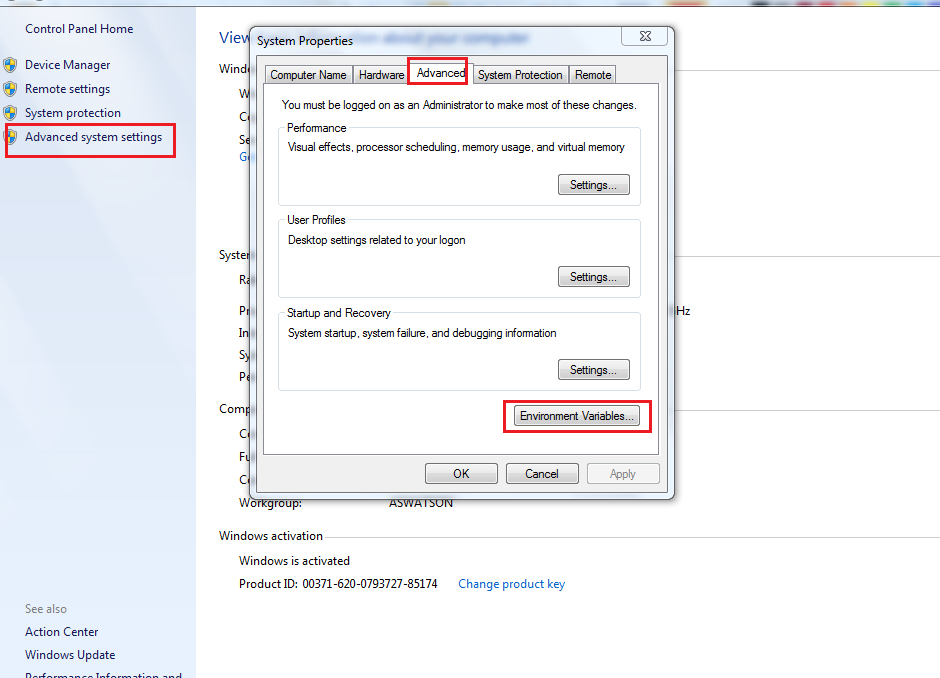- ECJ is not installed Error when deploy the portlet from eclipse
- PermGen Space Error / Out of Memory Error
ECJ
is not installed Error when deploy portlet in eclipse
Solution:
1
Generally in liferay to compile and build the
application it uses ECJ jar. When we use following properties in build.properits file of Liferay Plugins
SDK
#javac.compiler=modern
javac.compiler=org.eclipse.jdt.core.JDTCompilerAdapter
|
When we use JDT compiler in eclipse then It will
expect ecj.jar should be available
in global ant runtime path.
So we need to add ecj.jar file to ANT global class path as follows
Go to eclipse windows preferences
Select ANT run time as follows
Now add jar file to ant global class path. Select external jar file button then
brows ecj.jar file
Note:
ecj.jar
file available in Plugins SDK lib directory
(liferay-plugins-sdk-6.2.0/lib)
Solution:
2
Now we can also skip this error by using java
compiler to modern.
We already know we have created SystemUserName.build.properties to override properties in Plugins SDK
build.properties file.
We just uncomment JDT compiler and enable java
complier to modern in SystemUserName.build.propertis
file of your Plugins SDK.
Do as follows in properties file
javac.compiler=modern
#javac.compiler=org.eclipse.jdt.core.JDTCompilerAdapter
|
PermGen
Space Error / Out of Memory Error
When we run liferay we need to set heap memory for
JVM that is used by liferay application server
The following three options witch control the JVM
Heap memory so that we need to set this values as JAVA_OPTS.
-Xms
-Xmx
-XX:MaxPermSize
|
Set this following values as JAVA_OPTS so that
liferay portal can run without PermGen
space error or Out of Memory Error
-Xms1024m
-Xmx1024m -XX:MaxPermSize=256m
|
We can set JAVA_OPTS in following ways
- Set JAVA_OPTS as System Variable
- Set JAVA_OPTS in Application Server
- Set JAVA_OPTS to Eclipse Configured Server
Set
JAVA_OPTS as System Variable in Windows
When we set JAVA_OPTS as System Environment Variable
then all servers uses the same java opts to all servers and applications which
are running in the machine
To set JAVA_OPTS in windows operating system we need
to go to computer properties and need to choose Advanced System Settings
The following screen shows to select computer
properties
Now click on Environment variables
The following screen shows advances
system settings
In the system variables section click on new button
to create new system environment variables
The following screen shows create system
environment variables
Once click on new it will ask variable name and its
value and click on OK then JAVA_OPTS will be created as System Environment Variables.
Enter following values
Variable
Name: JAVA_OPTS
Variable
Value: -Xms1024m -Xmx1024m -XX:MaxPermSize=256m
|
Note:
When we set JAVA_OPTS as system variables then all
application servers which are running in the machine will use these values.
This variable not only for Liferay portal it can be
for any web applications which are running in the server.
This variables setting in windows environment and
its same for other OS like Linux but setting of variable is bit different.
Set
JAVA_OPTS in Application Server
We can also set JAVA_OPTS values in application serves.
For each server there some configuration files we can set server configuration
in the file so that it can be read by when server is starting.
When we set the value in server then it can be used
by application which is running in the server.
Server configuration file is different with respect
to server vendor.
Tomcat
Server:
In tomcat we will use setenv.bat/setenv.sh file to configure JAVA_OPTS
Go to tomcat server bin directory and create setenv.bat
file for windows environment and setenv.sh for Linux environment.
Once we create the files add JAVA_OPTS in file as
follows
In windows setenv.bat as follows
set
"JAVA_OPTS=%JAVA_OPTS% -Xmx1024m -XX:MaxPermSize=256m"
|
In Linux setenv.sh as follows
export
JAVA_OPTS="$JAVA_OPTS -Xmx1024m -XX:MaxPermSize=256m"
|
In tomcat server we can also use CATALINA_OPTS instead of JAVA_OPTS. This
is only for tomcat server
In windows setenv.bat
as follows
set
" CATALINA_OPTS =% CATALINA_OPTS % -Xmx1024m -XX:MaxPermSize=256m"
|
In Linux setenv.sh
as follows
export
CATALINA_OPTS ="$ CATALINA_OPTS -Xmx1024m -XX:MaxPermSize=256m"
|
Note:
In liferay tomcat server setenv.bat/setenv.sh and
configuration already have done. If any problem occurred we just need adjust
the values in configuration.
This configuration not only for liferay environment
we can use for any web applications which are in running in server.
JBOSS
Server
Jboss in windows
Jboss server in windows OS we will use standalone.conf.bat
this file available in jboss server bin directory (jboss-7.1.1\bin).
Open jboss standalone.conf.bat and set JAVA_OPTS as follows
set
"JAVA_OPTS=%JAVA_OPTS% -Dfile.encoding=UTF-8
-Djava.net.preferIPv4Stack=true -Duser.timezone=GMT -Xmx1024m
-XX:MaxPermSize=256m"
|
Jboss in Linux
Jboss server in Linux we will use standalone.conf
this file available in jboss server bin directory(jboss-7.1.1\bin).
Open jboss standalone.conf
and set JAVA_OPTS as follows
JAVA_OPTS="$JAVA_OPTS
-Dfile.encoding=UTF-8 -Djava.net.preferIPv4Stack=true -Duser.timezone=GMT
-Xmx1024m -XX:MaxPermSize=256m"
|
Note:
In liferay jboss bundle all configurations already
done and when we get any problems then we just need to adjust values.
These configuration can use for any web application
not only for liferay.
Set JAVA_OPTS to Eclipse Configured Server
Generally we configure application servers to
eclipse. We can also configure the values through eclipse.
In ellipse go to servers view and double click on
server and then click open launch configuration
Once opened configuration winnow select arguments
tab and see the VM arguments
Now you can see memory related variables and you can
adjust the size of variables
















